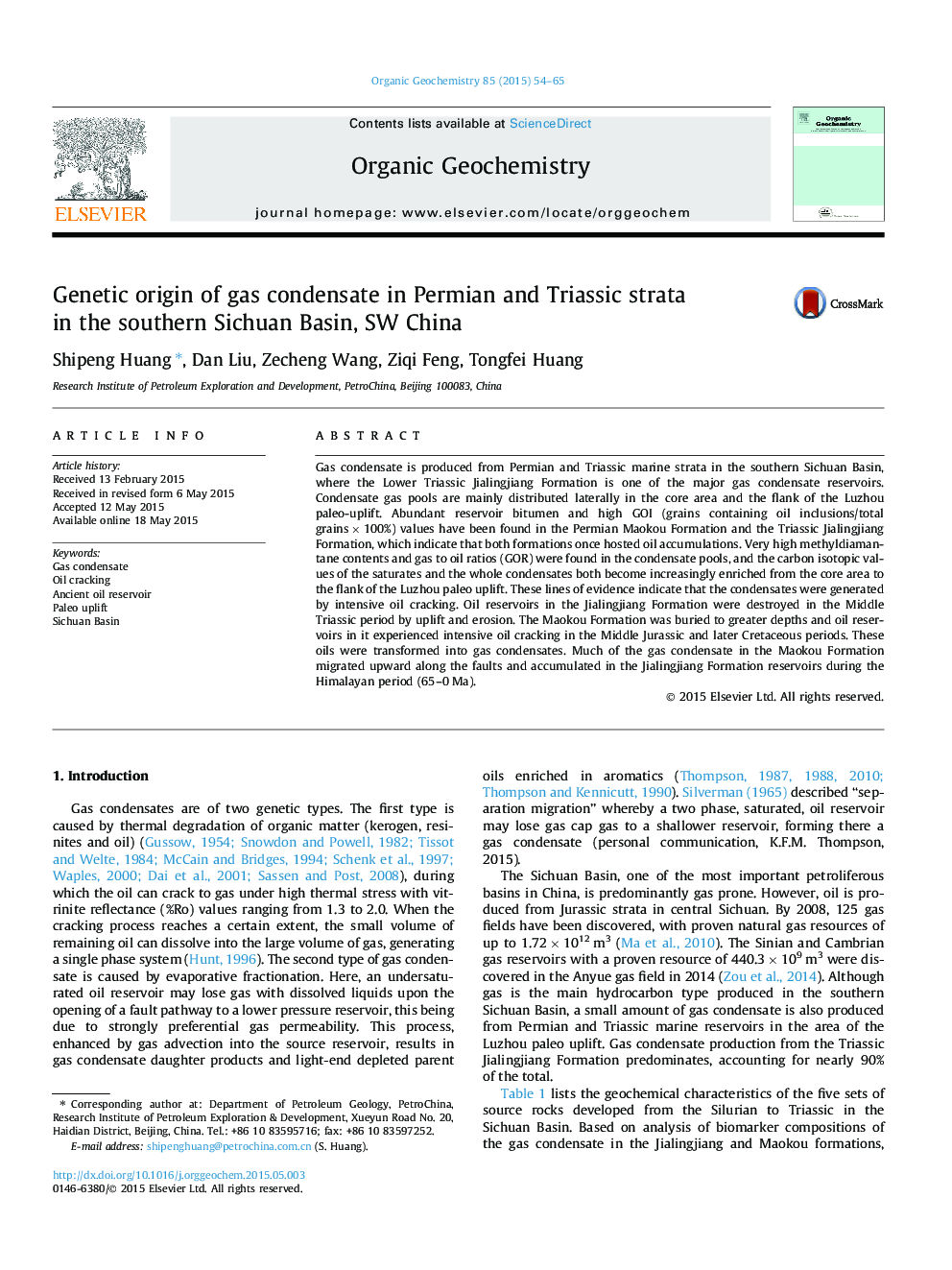| Article ID | Journal | Published Year | Pages | File Type |
|---|---|---|---|---|
| 5161524 | Organic Geochemistry | 2015 | 12 Pages |
Abstract
Gas condensate is produced from Permian and Triassic marine strata in the southern Sichuan Basin, where the Lower Triassic Jialingjiang Formation is one of the major gas condensate reservoirs. Condensate gas pools are mainly distributed laterally in the core area and the flank of the Luzhou paleo-uplift. Abundant reservoir bitumen and high GOI (grains containing oil inclusions/total grains Ã 100%) values have been found in the Permian Maokou Formation and the Triassic Jialingjiang Formation, which indicate that both formations once hosted oil accumulations. Very high methyldiamantane contents and gas to oil ratios (GOR) were found in the condensate pools, and the carbon isotopic values of the saturates and the whole condensates both become increasingly enriched from the core area to the flank of the Luzhou paleo uplift. These lines of evidence indicate that the condensates were generated by intensive oil cracking. Oil reservoirs in the Jialingjiang Formation were destroyed in the Middle Triassic period by uplift and erosion. The Maokou Formation was buried to greater depths and oil reservoirs in it experienced intensive oil cracking in the Middle Jurassic and later Cretaceous periods. These oils were transformed into gas condensates. Much of the gas condensate in the Maokou Formation migrated upward along the faults and accumulated in the Jialingjiang Formation reservoirs during the Himalayan period (65-0 Ma).
Related Topics
Physical Sciences and Engineering
Chemistry
Organic Chemistry
Authors
Shipeng Huang, Dan Liu, Zecheng Wang, Ziqi Feng, Tongfei Huang,
